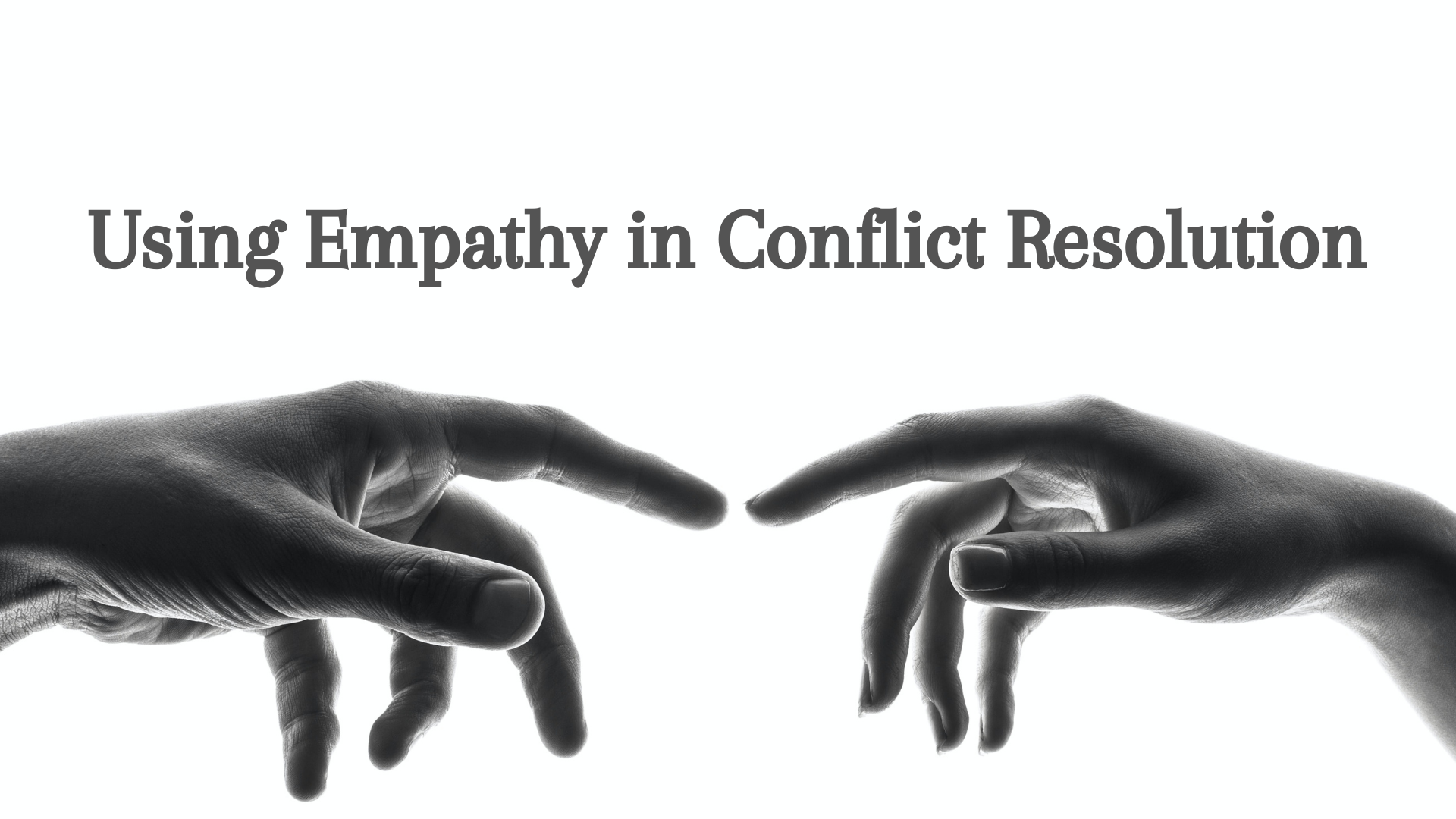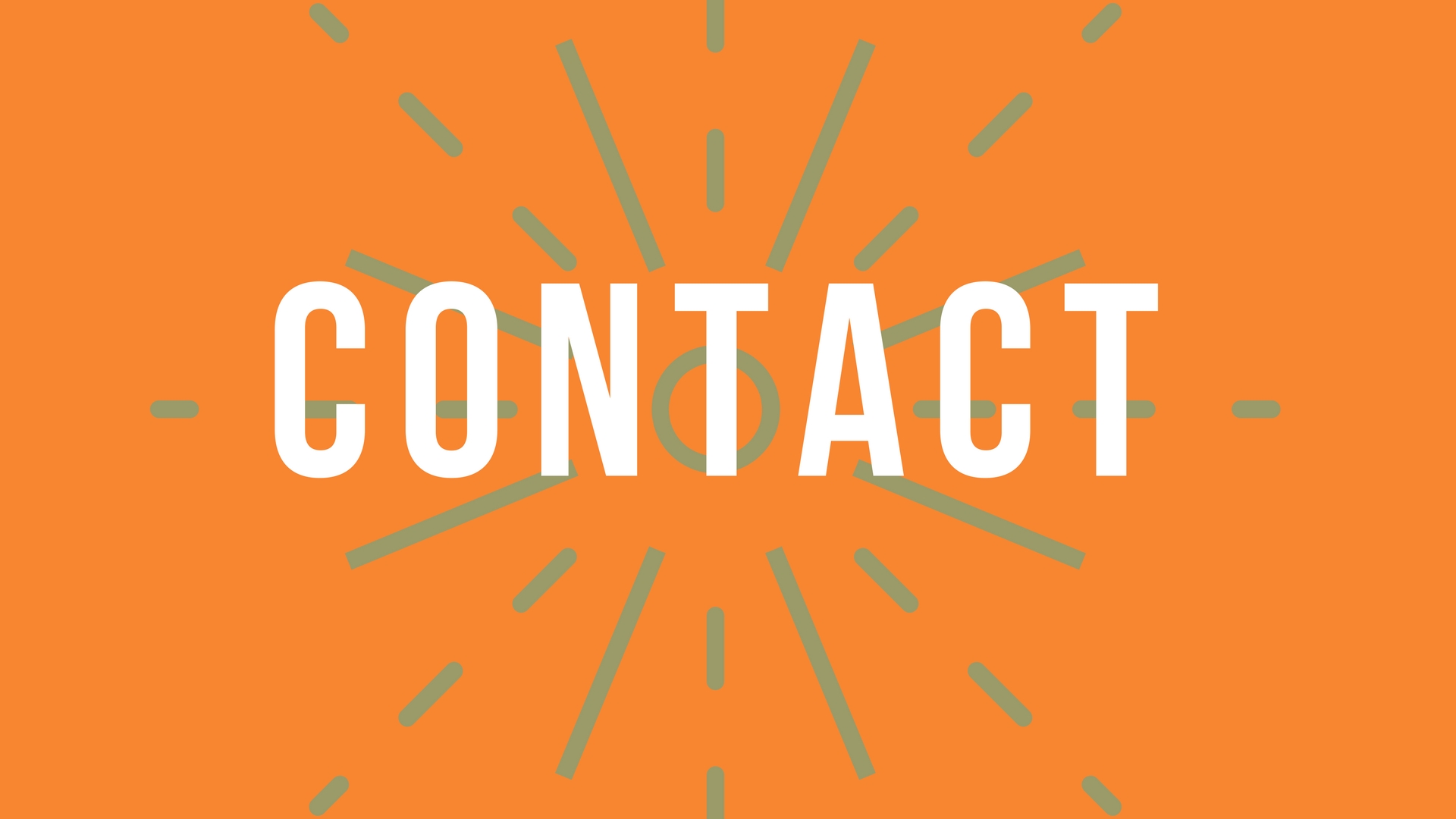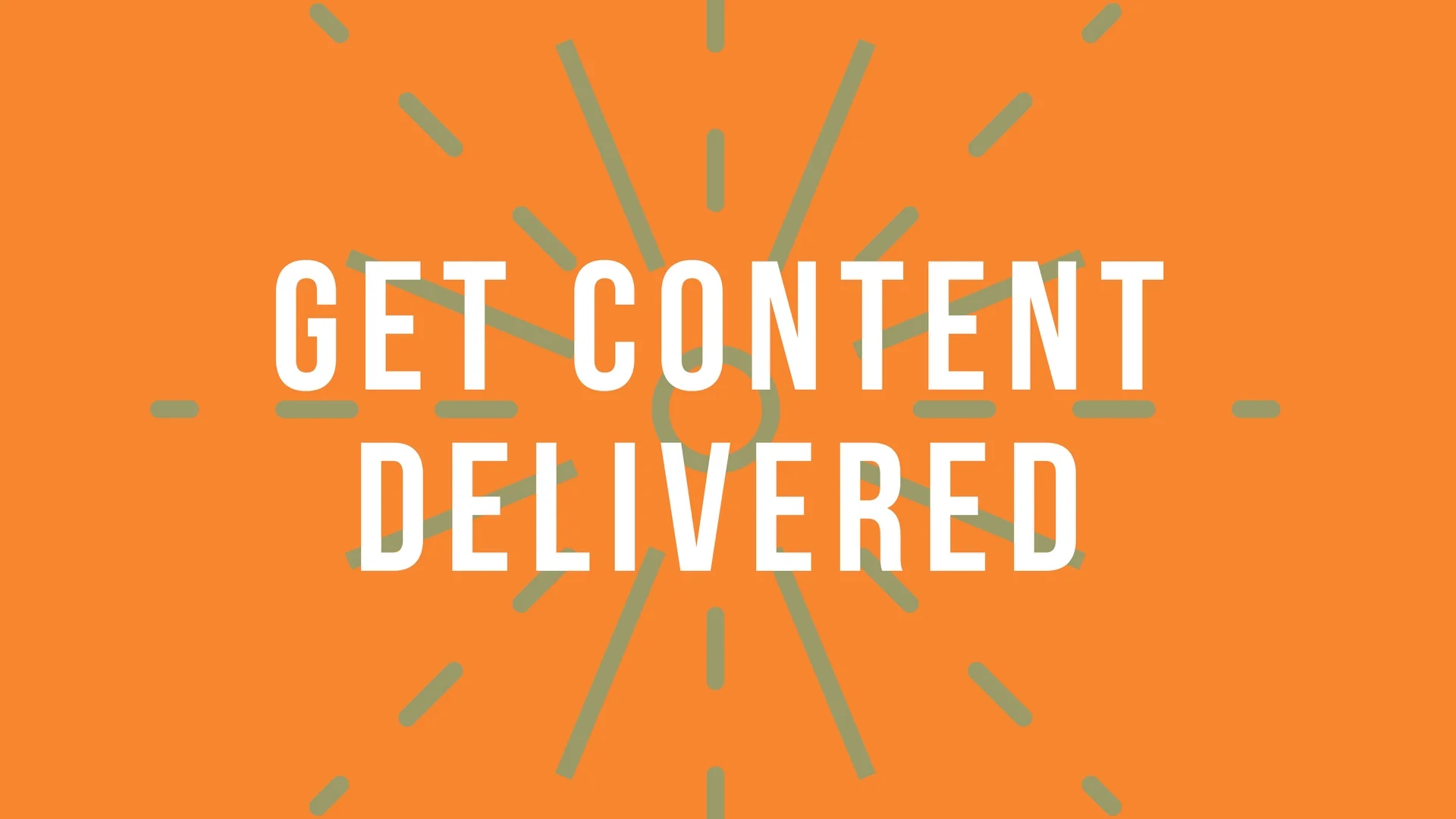Why We Disagree - [The Larger Reason]
/part one: the facts aren’t helping
Here is something that has been profoundly helpful for me in an age of division.
To be honest, I just wish everyone saw things the way I did…it would make the world at least seem easier (though the diversity in our disagreements can actually be helpful - more on that here). Today especially, where political perspectives and moral differences run rampant in chaos, I’ve often been frustrated that we can’t all just think and feel the same way about everything. Even when the facts seem to be so clear, people hold on to their perception to the grave and it becomes their reality no matter how convincing we think we are.
So why do we disagree?
How can one person be so adamant about a solution or perspective and someone else be just as adamant about the opposite?
You are convinced that gun violence should lead to the banning of guns.
Yet someone else is equally convinced that guns aren’t the problem.
You have the same data, the same information, but two starkly different perspectives arise.
Or, to you, it seems obvious that racial or gender or sexual injustice is a systemic issue yet someone else is just as adamant that the supposed inequality is a farce or that the actual problem is individuals or that the inequality in question is so minimal compared to other places and times in history that it shouldn’t even be part of the discussion.
If the answer is so obvious & the data is all there, why do we reach different conclusions? Why can’t we even agree on basic family solutions with the in-laws at Thanksgiving dinner or about organizational decisions at a team meeting?
There might be a larger difference in perspective that transcends data…and might explain why we disagree.
part two: the larger reason
Well, there is an answer. Almost unfortunately, it can be said that we will not always agree, but there is an explanation of why we might be reaching different conclusions even when the information we are working with is the same. There is a reason that you can give a solid, seemingly unarguable explanation with all the right data and they still won’t see the issue the same way you do; that two people can look at the exact same thing and see it differently.
Because the lens through which someone perceives and interprets the data is different.
Our disagreements aren’t usually about the content, they are about the foundational posture through which we see the content - which means someone who shares your lens will agree when you present your argument, but if they don’t share your lens or perception or the mode of how you interpret the data, then their perception will still be different. And, if this is true, it means you might disagree with my point because you have a different mode through which you are viewing the world…which I guess makes my point.
The concept?
It is called “The Methods of Moral Reasoning”.
This comes, in part, from a man named Lawerence Kohlberg, a psychologist, who expanded on Jean Piaget’s Moral Development Theory for the cognitive development of children to give an image for how we decide what is right and wrong.
In general, there are three methods:
1. Rule-Based Method - a rule or law is established, so that should determine what we do.
Kohlberg classified the first part of this stage as “Pre-Conventional” - where we follow the rules. Kohlberg explained two developments of why people do this - one to avoid punishment, another to gain a reward from obedience. But this then develops into “Conventional” reasoning where we either follow a rule to appear correct or because of Law & Order - that following the letter of the law is the best instinct we have for how to act.
What this means is that if there is a rule on guns or race or an organizational decision, then we follow it. You can look at any set of data and, if your lens is the determined rules, then you perceive the data through those determined rules. For some people, this is the Constitution or the Bible - so even in the same method, people have different sources for the rules they function by - but, whatever their source, that is what determines their moral reasoning and the resulting perspective.
2. Greatest Good Method - what is the decision that brings the most realistic good?
Realistic is the key word here which separates this method from the next one.
There is a man named Dietrich Bonhoeffer, a theologian and pastor, who participated in a plot to assassinate Hitler. He was caught, put in prison, and eventually killed for this. Bonhoeffer claimed he was functioning within this method. He didn’t believe it was right to kill someone. He also knew it was against the law - not only common law, but also the Bible which acted as his source for decision making. Bonhoeffer literally felt that he would suffer eternally for agreeing to be a part of this assassination.
So why did he go through with it? Because he was functioning within the moral reasoning of “The Greatest Good”.
This method is marked by an acknowledgment of compromise - that it might not be the ideal and it also might break the rules, but this method seeks to bring the most realistic good possible and understands that rules are relative. You follow the rules not to hurt the greater good, but, as Kohlberg articulated, you follow a Social Contract (the first part of what he claimed was Post-Conventional reasoning) asking what is the most reasonable good even if it isn’t the ideal.
When someone ignores or pushes past a rule claiming that we could do better, they are functioning within this method. It is also this method that leads to progress on rules and an evolution of laws.
It also should be said that this method is very subjective - black and white thinkers don’t often go here because they want a clear standard - but there is an increase in the ability to use data to show what might be for the greater good. Be careful with this one.
Finally, you have one that is most detached from reality:
3. Teleological Method - reasoning that is based on a larger vision in an attempt to reason based on how things ought to be.
The best example I can conjure up of someone who reasoned this way? Jesus. Much of what Jesus taught and did was highly unrealistic because it was rooted in a finished product that he called “The Kingdom of God” or “The Age to Come”. This is what philosophy calls a “telos” for the Greek word “end”. The end goal should determine how we act now so that we move closer to it.
People who function by this method fall under Kohlberg’s Post Conventional description of “Universal Ethics” - a way of life based on the ideal. They want to see the human project live, both individually and societally, in the best way possible. Whatever decisions are being made, then, are based on that goal, or, “telos”.
From Martin Luther King Jr. to Gandhi, people have actually used this effectively, but you can see why someone arguing based on the ‘Teleological Method’ with someone using the ‘Rule Based Method’ are going to disagree.
They have different starting points that inform what they think is going to be the most helpful with a given set of data or a given situation.
This is why you can have all of the same information & data and still reach different conclusions - because you are interpreting the data through a perspective lens that has a different goal as the others.
So the next time you find yourself frustrated that someone just doesn’t get it - maybe consider that they do get it - they are just using a different method. Be it guns or immigration or race or their over-bearing personality, the phrase “agree to disagree” should now have a bit more meaning; because you can agree that your lens is what brings forth the disagreement, not the actual content of the disagreement.
Really, you can both be right - and it might actually force both arguers to expand their perspectives by seeing the insight the other is offering based on their chosen method of moral reasoning.
Or you can just argue that their chosen method is wrong - at least you will be arguing about the real issue of your disagreement.
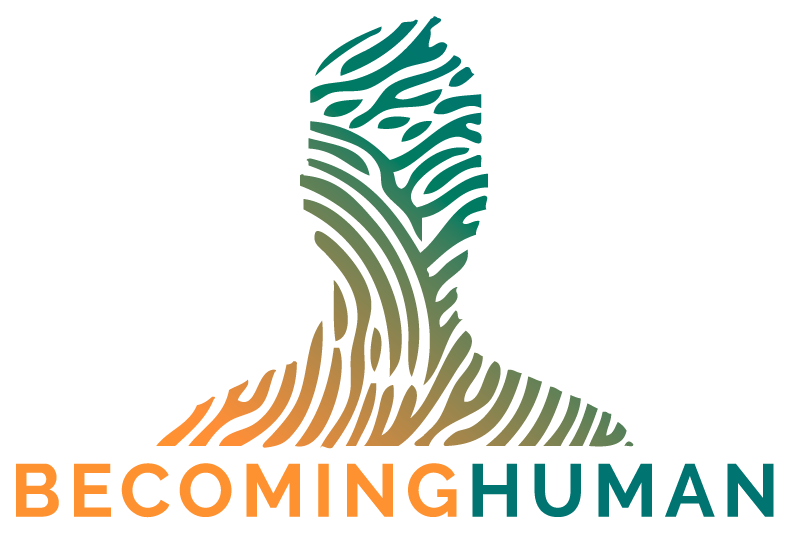

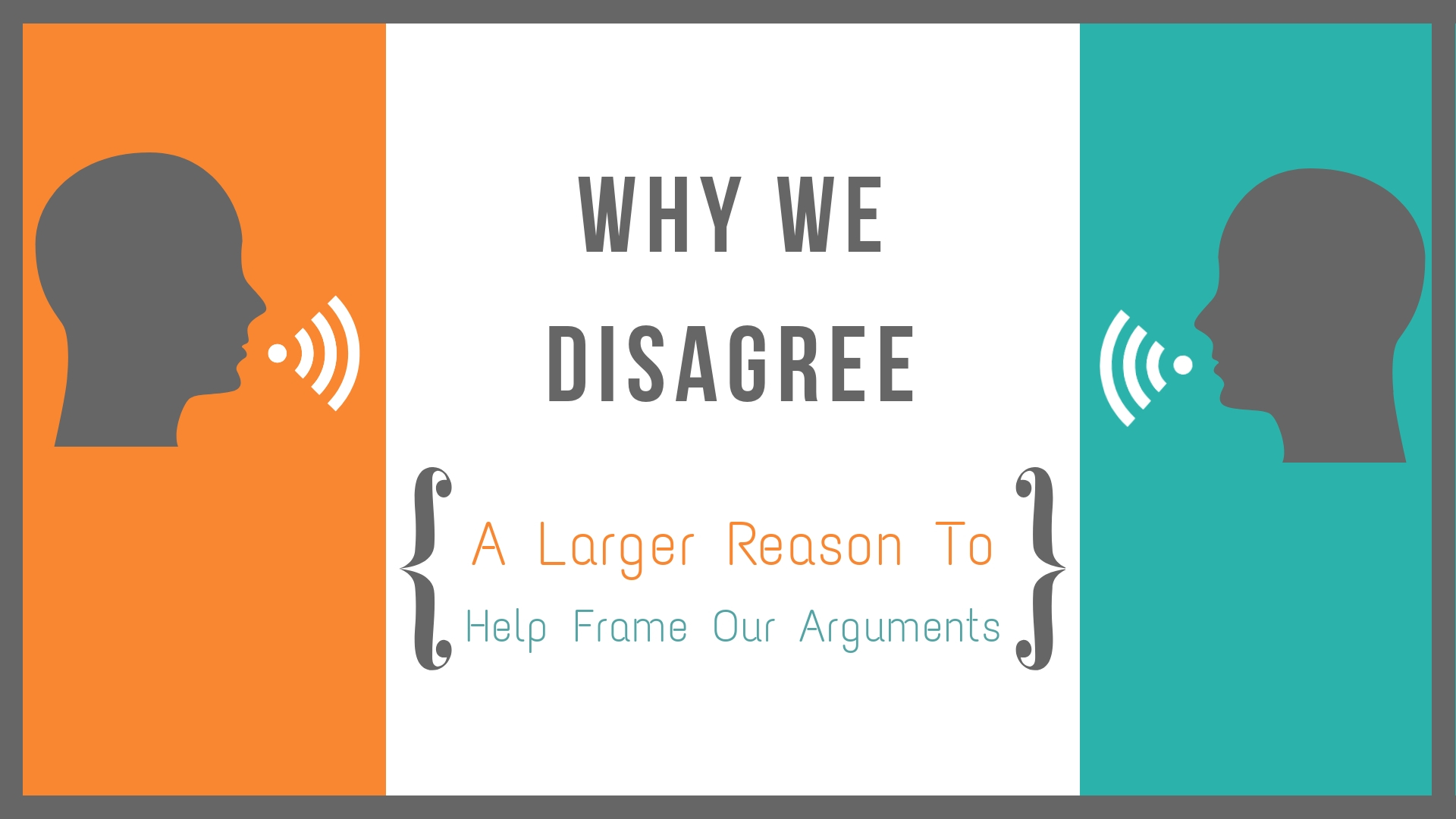







![Three Reasons We're Lonely - [And Three Responses For Being Less So]](https://images.squarespace-cdn.com/content/v1/5963d280893fc02db1b9a659/1651234022075-7WEKZ2LGDVCR7IM74KE2/Loneliness+3+update+%283%29.png)




















